Kenneth MacAlpin or Kenneth I was King of Dál Riada (841–850), King of the Picts (843–858), and the first King of Alba (843–858) of likely Gaelic origin. He inherited the throne of Dál Riada from his father Alpín mac Echdach, founder of the Alpínid dynasty. Kenneth I conquered the kingdom of the Picts in 843–850 and began a campaign to seize all of Scotland and assimilate the Picts, for which he was posthumously nicknamed An Ferbasach. Forteviot became the capital of his kingdom, and he also fought the Britons of the Kingdom of Strathclyde and the invading Vikings from Scandinavia. Kenneth also relocated relics including the Stone of Scone from an abandoned abbey on Iona to his new domain.
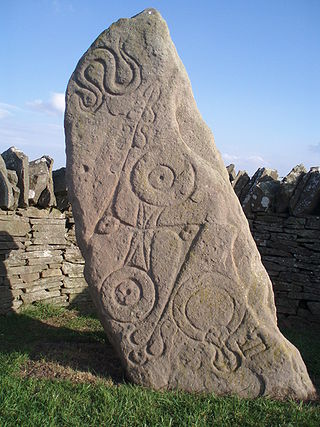
The Picts were a group of peoples who lived in Britain north of the Forth–Clyde isthmus in the Pre-Viking, Early Middle Ages. Where they lived and details of their culture can be inferred from early medieval texts and Pictish stones. The term Picti appears in written records as an exonym from the late third century AD, but was adopted as an endonym in the late seventh century during the Verturian hegemony. This lasted around 160 years until the succession of the Alpínid dynasty, when the Pictish kingdom merged with that of Dál Riata to form the Kingdom of Alba. The concept of "Pictish kingship" continued for a few decades until it was abandoned entirely as a contemporary signifier during the reign of Caustantín mac Áeda.
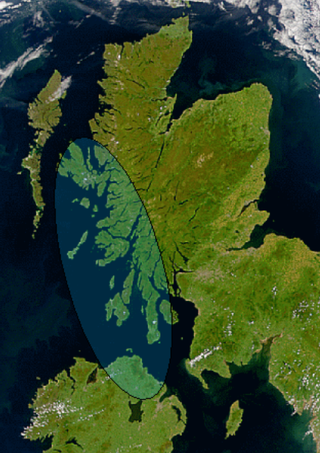
Dál Riata or Dál Riada was a Gaelic kingdom that encompassed the western seaboard of Scotland and north-eastern Ireland, on each side of the North Channel. At its height in the 6th and 7th centuries, it covered what is now Argyll in Scotland and part of County Antrim in Northern Ireland. After a period of expansion, Dál Riata eventually became associated with the Gaelic Kingdom of Alba.
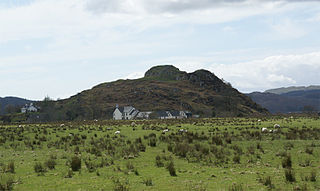
Dunadd is a hillfort in Argyll and Bute, Scotland, dating from the Iron Age and early medieval period and is believed to be the capital of the ancient kingdom of Dál Riata. Dal Riata was a kingdom, that appeared in Argyll in the early centuries AD, possibly after the Romans had abandoned Southern Britain and at the time when the Anglo Saxons were crossing the North Sea to counter incursions over Hadrian's Wall by the Picts and Dalriadan Scots.
Pictish is the extinct Brittonic language spoken by the Picts, the people of eastern and northern Scotland from Late Antiquity to the Early Middle Ages. Virtually no direct attestations of Pictish remain, short of a limited number of geographical and personal names found on monuments and early medieval records in the area controlled by the kingdoms of the Picts. Such evidence, however, points strongly to the language being an Insular Celtic language related to the Brittonic language spoken prior to Anglo-Saxon settlement in what is now southern Scotland, England, and Wales.
Giric mac Dúngail, known in English simply as Giric and nicknamed Mac Rath, was a king of the Picts or the king of Alba. The Irish annals record nothing of Giric's reign, nor do Anglo-Saxon writings add anything, and the meagre information which survives is contradictory. Modern historians disagree as to whether Giric was sole king or ruled jointly with Eochaid, on his ancestry, and if he should be considered a Pictish king or the first king of Alba.

Atholl or Athole is a large historical division in the Scottish Highlands, bordering Marr, Badenoch, Lochaber, Breadalbane, Strathearn, Perth, and Gowrie. Historically it was a Pictish kingdom, becoming one of the original provinces of the Kingdom of Alba before being incorporated into the sheriffdom and later county of Perthshire. Today it forms the northern part of Perth and Kinross, Scotland.
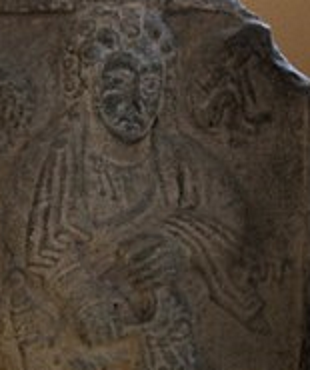
Óengus son of Fergus was king of the Picts from 732 until his death in 761. His reign can be reconstructed in some detail from a variety of sources. The unprecedented territorial gains he made from coast to coast, and the legacy he left, mean Óengus can be considered the first king of what would become Scotland.
Bran Mak Morn is a hero of five pulp fiction short stories by Robert E. Howard. In the stories, most of which were first published in Weird Tales, Bran is the last king of Howard's romanticized version of the tribal race of Picts.

Fortriu was a Pictish kingdom recorded between the 4th and 10th centuries. It was traditionally believed to be located in and around Strathearn in central Scotland, but is more likely to have been based in the north, in the Moray and Easter Ross area. Fortriu is a term used by historians as it is not known what name its people used to refer to their polity. Historians also sometimes use the name synonymously with Pictland in general.
Bridei son of Uurad was king of the Picts, in modern Scotland, from 842 to 843. Two of his brothers, Ciniod and Drest, are also said, in the king lists of the Pictish Chronicle, to have reigned for a short time.
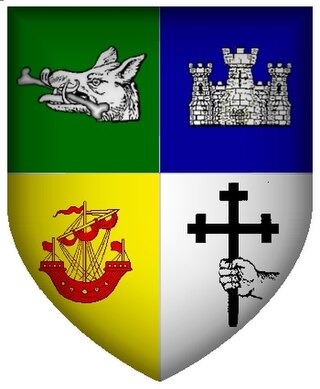
Clan MacKinnon is a Highland Scottish clan from the islands of Mull and Skye, in the Inner Hebrides.

The origins of the Kingdom of Alba pertain to the origins of the Kingdom of Alba, or the Gaelic Kingdom of Scotland, either as a mythological event or a historical process, during the Early Middle Ages.
Gartnait son of Donuel was king of the Picts from 657 until 663.

Many writers have been drawn to the idea of the Picts and created fictional stories and mythology about them in the absence of much real data. This romanticised view tends to portray them as sometimes wearing the modern Kilt or as noble savages, much as the view of Europeans on Native Americans in the 18th century.

Scotland was divided into a series of kingdoms in the early Middle Ages, i.e. between the end of Roman authority in southern and central Britain from around 400 CE and the rise of the kingdom of Alba in 900 CE. Of these, the four most important to emerge were the Picts, the Gaels of Dál Riata, the Britons of Alt Clut, and the Anglian kingdom of Bernicia. After the arrival of the Vikings in the late 8th century, Scandinavian rulers and colonies were established on the islands and along parts of the coasts. In the 9th century, the House of Alpin combined the lands of the Scots and Picts to form a single kingdom which constituted the basis of the Kingdom of Scotland.

Clan McCorquodale is a Scottish clan, recognised by the Lord Lyon King of Arms, though without a chief so recognised. The last chief of the clan died in the 18th century. Because the clan does not have a recognised chief, it is considered an armigerous clan, and has no legal standing under Scots Law. Historically, the clan inhabited lands west of Loch Awe, in Argyll. These clan lands were centred at Loch Tromlee, where an island castle served as the clan seat. The line of Clan McCorquodale chiefs, first recorded in the 15th century, has been untraced since the 18th century.

Cé was a Pictish territory recorded during the Early Medieval period and located in the area of modern-day Aberdeenshire, Scotland.

The Christianisation of Scotland was the process by which Christianity spread in what is now Scotland, which took place principally between the fifth and tenth centuries.













